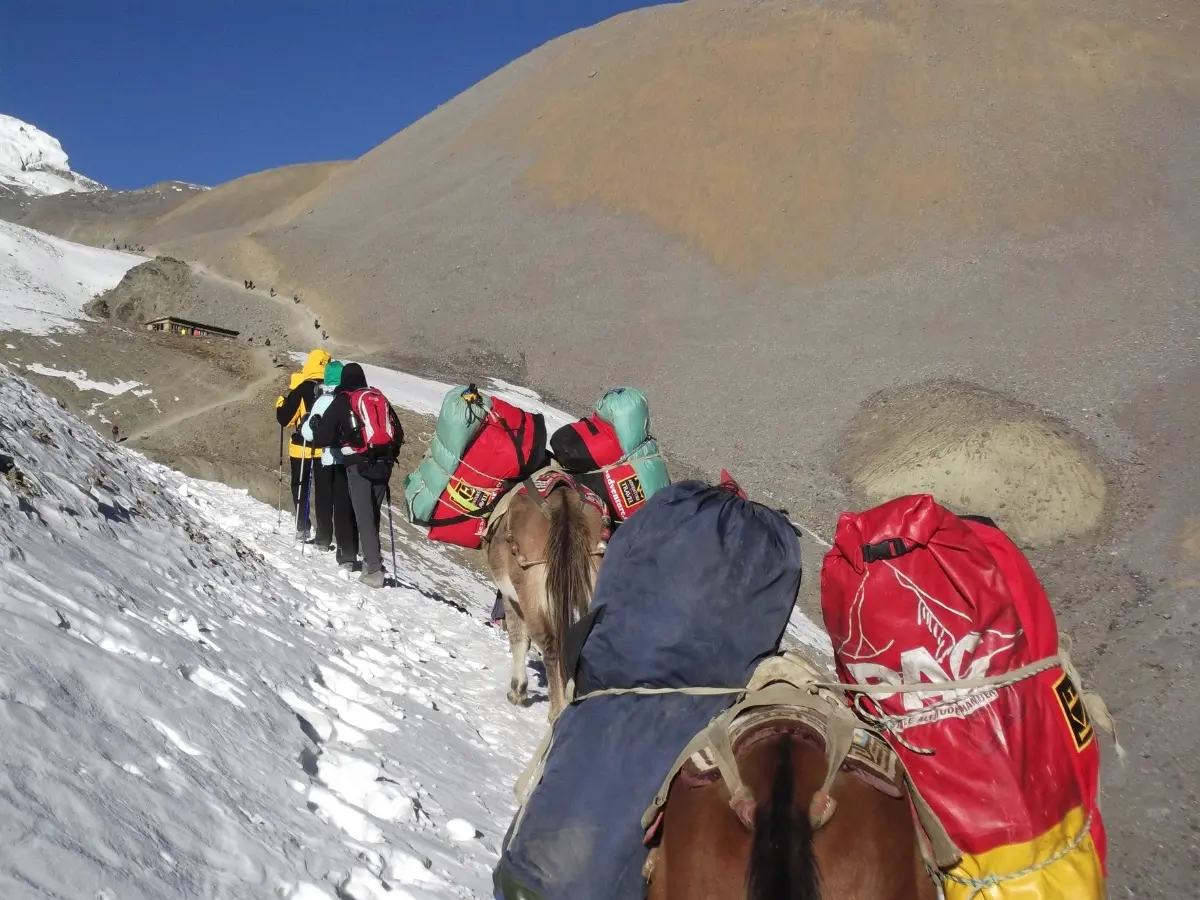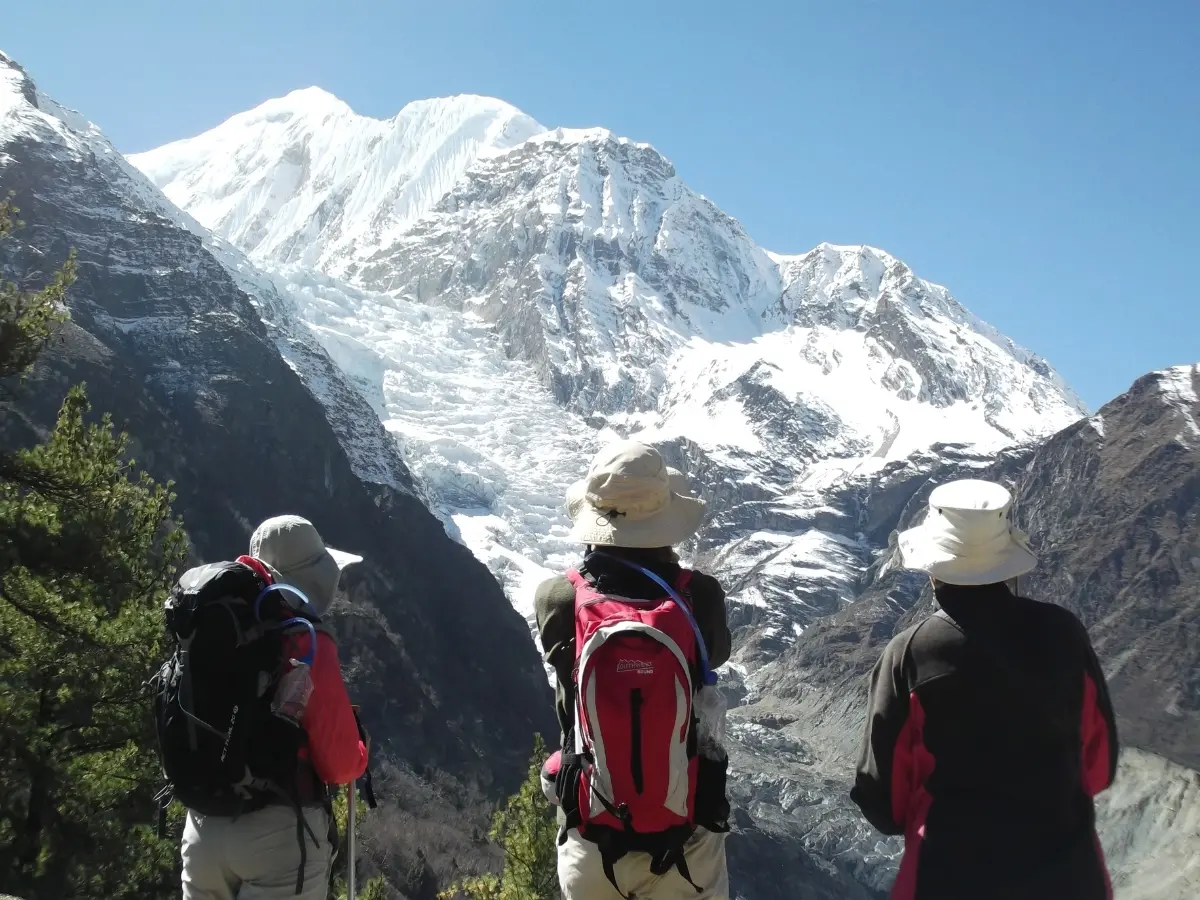Round Annapurna Trek is Nepal’s most popular long trek. It follows almost 80 km Annapurna Range in central Nepal. It begins at a comfortable altitude of 1100m, rising daily maximum 1000m. to each overnight stop, ensuring steady acclimatization. The scenery gradually changes from lush forests and terraced farmlands to more open country as the high peaks begin to appear and the effects of the rain shadow area. Lowland Hindu communities gradually give way to Buddhist communities of Tibetan origin. Residents of the numerous villages of Gurung, Magar, Thakali, Chhetri and Brahmins on the route will welcome you.
Highlights of the Annapurna Circuit Trek include the high trail from Upper Pisang through Ghyaru and Ngawal to Braga (with its ancient Gompa) with magnificent views of Annapurna II and IV. Manang (3540m) is the largest village and offers perfect views of Gangapurna and Annapurna III. The high pass over the Thorung La (5416m : 17765ft.) is an adventurous day in the whole trek. Its summit offers superb views in all directions, before descending 1700m to Muktinath. Kagbeni is an ancient stone village and holiest Beni (meeting point of two rivers) on the Kali Gandaki River and is also the gateway to Upper Mustang.
Jomsom has an airport with flights to Pokhara for those with limited time. A bus from Jomsom to Tatopani has recently operated. From Tatopani (hot springs) the trail leaves the road and leads you through magnificent forests rhododendron to Ghorepani and a sunrise trek to Poon Hill to view the panoramic scenery of Mt. Dhaulagiri, Mt. Annapurna, Mt. Manaslu, Mt. Nilgiri, Mt. Fishtail (also known as Machhapuchhare), Mt. Hiunchuli, Mt. Lamjung Himal the Himalayan peaks. From there the trail descends through farmlands and forests towards to Tikhedhunga and trek ends at Pokhara with its beautiful Phewa Lake, and your hotel.
Spring (March – May) and autumn (September – November) are the most popular months. Good boots, warm clothing (including a down jacket) and a sleeping bag are recommended, plus a day pack with water bottles, a hat and sunscreen, cameras and a torch.


